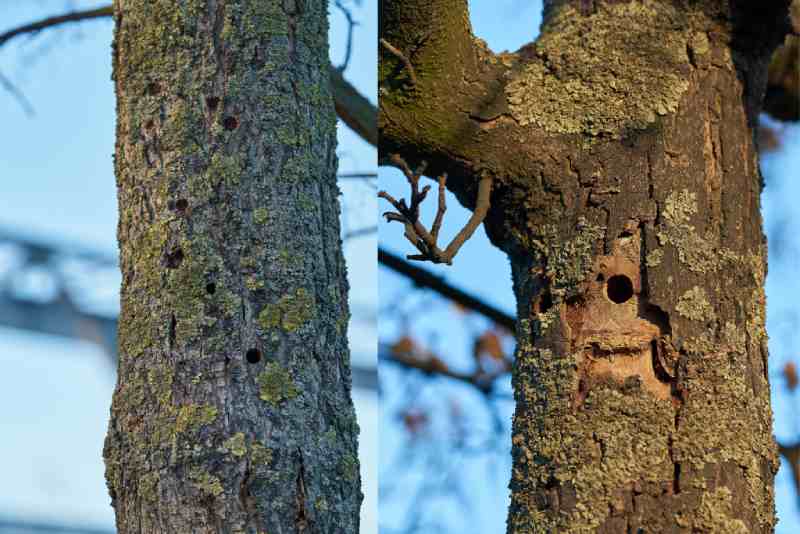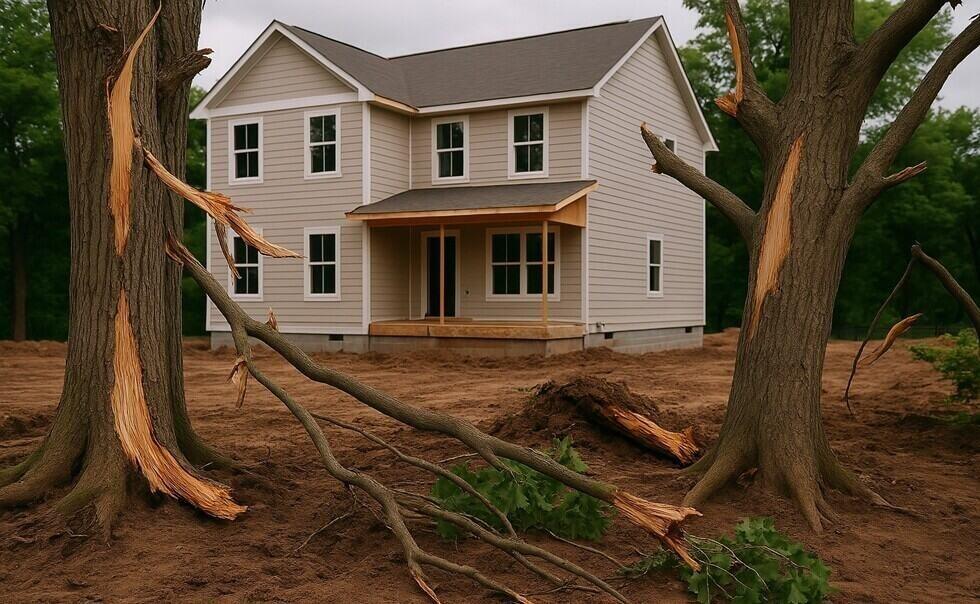It starts with a dream. You’re thinking of doing the renovation that will really make your property the perfect oasis. You get a reputable builder, work through the blueprints, select the materials, and set a date for building. There was a tree just a few yards away from the project, so no one gave it much thought. But about 6 years later, the tree’s health declined until it finally died.
What happened in between is a story we see far too often with home renovations. What happened and how can you make sure this doesn’t happen to you? The answer lies in planning ahead for tree protection or tree root removal during construction and getting the opinion of a Certified Arborist.

The Unseen Impact of Construction
Construction can kill trees—even when the work appears “nowhere near them.” Most homeowners don’t realize that a tree’s root system extends well beyond what’s visible. In fact, the drip line—the area under the tree’s canopy—is only part of the story. Roots can stretch two to three times further than the canopy itself. Common projects range from installing irrigation systems, lighting, driveways, and additions.
During projects like this, heavy machinery can roll over the root zone. Materials are often stacked nearby. Soil can be compacted. Often, no protective barriers are installed. It may not look like anything dramatic is happening—but underground, the damage is done.
At first, the tree seemed fine. That’s the trick. Trees often don’t show signs of stress right away. But over the years, its leaves grew sparse. Limbs began to die back. Fungal infections took hold. And by the time an arborist was called, it was too late.
Point blank: If you are building and there are trees on the property, you need to consult with an arborist when you’re still in the planning stage for tree protection during construction about tree root removal. Regardless if it seems far away enough to not affect the tree, we can assure you, it almost never is.
Why Tree Preservation Matters
Construction damage is stealthy. It doesn’t come with warning signs or alarms—it just quietly sets a healthy tree on a path to chronic decline. And by the time you notice the symptoms, the root damage has usually already sealed the tree’s fate.
Here’s why you should care:
- Tree removal is expensive. Often more than the cost of a preservation plan.
- Losing shade means higher energy bills. Up to 15% more in cooling costs.
- Trees increase property value. A single mature tree can raise home value by 10% or more.
- Local regulations require protection. In areas like Fairfax County, a Tree Preservation Plan isn’t optional—it’s the law.
And perhaps most importantly, the emotional loss of a tree that’s been part of your family’s story can be devastating.
Tree Health Is a Shared Responsibility
We tell this story not to scare—but to prepare.
If you’re dreaming of a deck, a patio, a garage extension, or even a new fence line—pause and consider your trees. And if your neighbor is about to start a build that could affect trees on your property, a simple conversation and proactive planning can make all the difference.
At RTEC Treecare, we’re not just here to prune and plant. We not only have the expertise, the tools, and the capabilities to get the job done; we also have over 25 years of trust and credibility helping trees facing exposure.
We’re your partner in long-term tree preservation and pre-construction tree care. Let’s make sure your backyard story doesn’t end with a stump.

Partner with Tree Care Experts For tree protection during construction
By partnering with registered arborists, such as our team at RTEC Tree Care, property owners can give their landscape the best chance for recovery. Our skilled tree care specialists can save the tree with strategic care and aftercare methods. Contact RTEC Tree Care today before tree damage during construction and breaking ground to see how your trees are part of the bigger picture.


